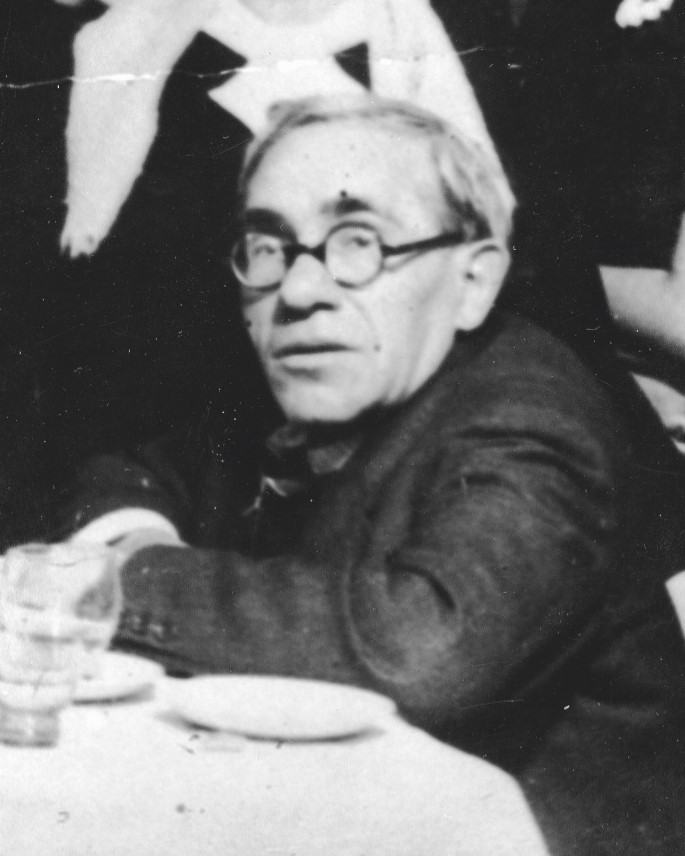Jacob MACZNIK
January 3, 2019MANÉ-KATZ
January 3, 2019Ephraim MANDELBAUM
LUBLIN (POLAND) 1884 – DEPORTED 1942
Ephraim Mandelbaum was born into a pious and humble family in Lublin. His father, who was a carpenter, moved to Lodz. Ephraim Mandelbaum received a religious education before enrolling in a Russian school. He started painting at a very young age and was encouraged to follow his artistic vocation by his first painting teacher Samuel Hirschenberg. In 1905, he was awarded a scholarship. He enrolled in the Academy of Fine Arts in Krakow and studied under Joseph Mehoffer, an artist famed for his portraits and his stained-glass windows. In Krakow, Dr Frenkel, a chemist, took an interest in Mandelbaum’s painting and supported him financially. When Mandelbaum suddenly fell ill, his patron advised him to be treated in Egypt. Thus, for several years, he spent every winter in Egypt, where he met Countess Bielinska. The latter, who was originally from Poland, provided him with colors and organized exhibitions of his work. Mandelbaum visited Palestine and worked in a kibbutz before returning to Krakow.
During World War I, he was suspected of being a Russian spy. He was consequently arrested and imprisoned, and was told that he would be hung. He was saved by Dr Frenkel’s intervention and was sent to convalesce in a hospital in Vienna for four years. Following his experience in prison, he suffered from psychological after-effects. When he got out of the hospital, he met Rebecca Lichtman, whom he married in a small town in Galica. In 1925, Mandelbaum arrived in Paris with his wife and son. Once again, he stayed at a hospital before moving to Montparnasse. His wife, who was a nurse, looked after him and provided for the family. In 1938, he visited London, where his paintings were a resounding success.
On July 16, 1942, during the Vel d’Hiv roundup, Ephraim Mandelbaum and his wife were arrested by French policeman. They were deported on July 24 on convoy number 42. They were both murdered by the Nazis. Their son Sam Mandel, who also became a painter, committed suicide in Paris a few years later.
Stories of Jewish Artists of the School of Paris 1905-1939
FRENCH-ENGLISH
Capitale des arts, le Paris des années 1905-1939 attire les artistes du monde entier. De cette période de foisonnement, un terme est resté, celui d'Ecole de Paris, qui recouvre une grande diversité d'expression artistique. Dans ce brassage dont Montparnasse est le creuset, un groupe se distingue : celui des artistes juifs venus de Russie, de Pologne et d'Europe centrale. Si leurs styles sont variés, un destin commun les rassemble : ils fuient l'antisémitisme de leur pays d'origine. Certains ont connu la célébrité dès les années 1920, tels Soutine, Lipchitz ou Chagall. D'autres n'ont pas eu le temps ou la chance d'y accéder. Près de la moitié a péri dans les camps de concentration nazis.
From 1905 to 1939, Paris attracted artists from all over the globe as the capital of the art world. This period of artistic proliferation became known as the School of Paris, and includes a great diversity of artistic expression. Within the teeming art world centred on Montparnasse, one group set itself apart: Jewish artists from Russia, Poland, and Central Europe. Although their styles were diverse, they shared the common fate of fleeing anti-Semitic persecutions in their home countries. Some became famous in the 1920s, such as Soutine, Lipchitz, and Chagall, while others did not have the time or the luck to gain renown. Nearly half of these artists died in Nazi concentration camps.





